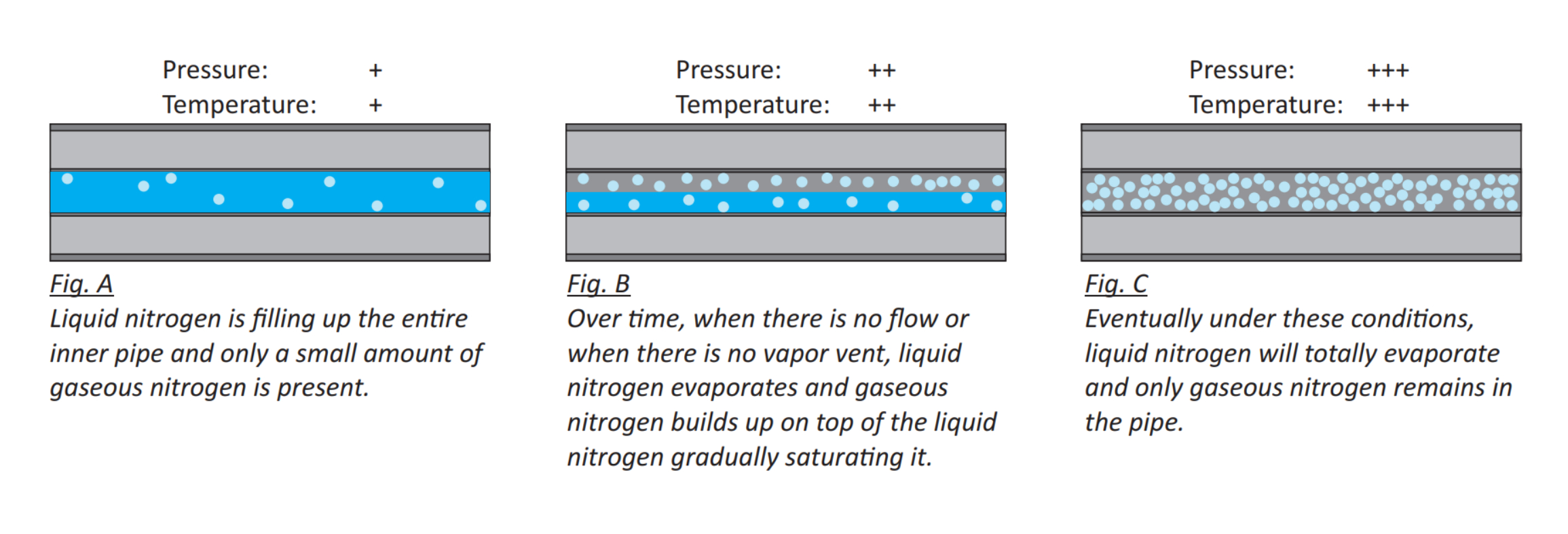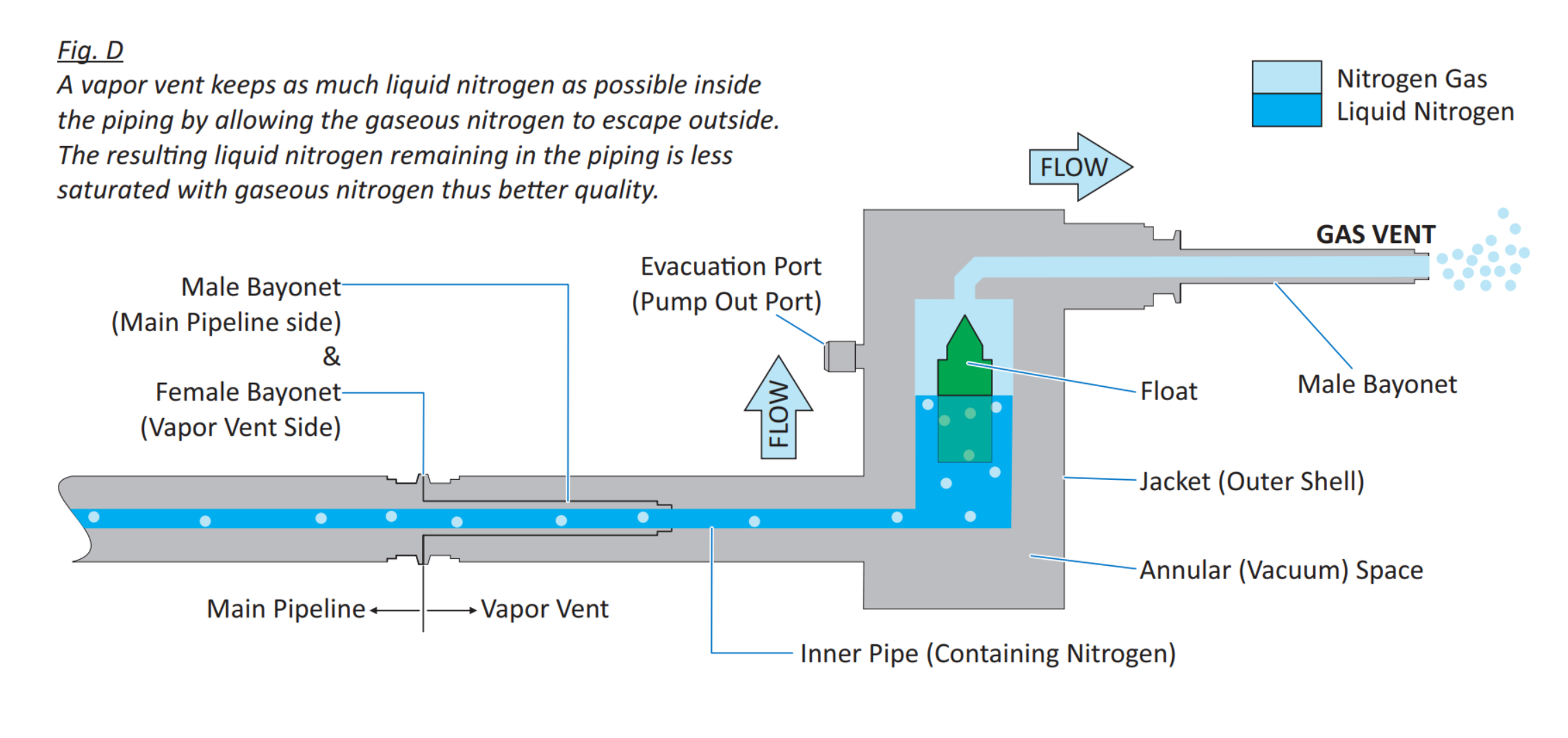The Ins and Outs of Liquid Nitrogen System Design
A well-planned LN2 cryogenic storage system is critical to ensure efficient and safe application by adhering to relevant codes and design criteria.

Liquid nitrogen (LN2) is a crucial resource in various industries, including the health-care, industrial and pharmaceutical sectors. This article focuses on the design of the LN2 system for pharmaceutical facilities, and discusses common issues and concerns to be considered during the design process.
The information in this article is based on project experience, the American Society of Plumbing Engineers’ “Pharmaceutical Facilities Plumbing Systems,” and Beacon MedAes’ “Design guidebook: Delivery systems for cryogenic liquids in laboratories.”
The LN2 system comprises storage tanks and a vaporizer, which depends on the need for gaseous nitrogen, piping to transport the gas and vapor vent. The design, system and sizing of LN2 systems in pharmaceutical facilities offer common issues and concerns designers must address.
Storage tanks
Cryogenic storage tanks are an integral part of the LN2 design and proper selection, placement and sizing of the tanks are critical to the system.
What is a Cryogenic storage tank? A cryogenic storage tank is meant to store gases at extremely low temperatures, defined as any gas in a liquid state at a temperature of –20 F (–28.9 C) or lower. The liquid form is a preferred storage method as it is more economical and practical due to the significantly reduced volume compared to a comparable quantity of compressed gas.
A cryogenic storage system includes a bulk storage tank, a vaporizer for converting the liquid gas to its gaseous state, and a piping network transporting gas and/or liquid to the point of use.
Storage tanks are insulated and come as large bulk tanks, micro bulk or dewars. These tanks can be installed horizontally or vertically. The vertical position is most common because it occupies less site area than a horizontal one. Additionally, the vertical tank presents a smaller wetted area for the liquid to vaporize, which is desirable to keep the stored liquid in that state for as long as possible.
Cryogenic storage tanks and ancillary equipment are mounted on a structural pad designed by the structural engineer. The tank pad should be at least 6 inches thick or as determined by the structural engineer, and large enough to allow for a vaporizer and additional equipment.
The sizing of the cryogenic tank depends on the volume of gas expected to be used between deliveries, which ranges from once to twice a month or per the client’s requirements, as well as the gas usage per day, shift, or week. This can be calculated using the total number of outlets, the quantity of gas used by each outlet, and the duration of use each day and based on prior project experience.
Once the volume is established, a good rule of thumb is to add 30% to the actual usable capacity of the tank, with 10% of the extra empty volume used as vaporization space and 20% of the volume occupied by the liquid gas as a reserve capacity. This reserve should provide a two- to three-day liquid supply when the low-level alarm point is reached, allowing enough time for the supplier to deliver more LN2.
Additionally, when selecting the tank size and bulk versus micro-bulk tank, it is essential to consider whether the project site can accommodate the delivery trucks’ size. Bulk tanks typically require larger trucks that won’t be able to access and deliver without proper clearance; coordinate this with the project architect early on. The tank’s height should be reviewed with city officials since certain jurisdictions limit tank heights.
It is also advisable to consult with the intended supplier to understand the delivery schedule and price. When determining the tank size, it’s essential to balance between minimizing the size and ensuring a reasonable supply between deliveries.
The fabrication of cryogenic liquid storage tanks adheres to several regulations and standards, including UL-644, ASME Code for Unfired Pressure Vessels, and NFPA 50, 50A and 50B. NFPA 99, Health Care Facilities, is often used as a laboratory standard.
Along with the codes mentioned above, engineers and designers should review all the applicable codes and ensure the design meets and conforms with the codes and design criteria set forth by the authority having jurisdiction.
Vaporizer
A vaporizer is a device that converts liquid nitrogen into gas, often used to avoid the need for delivering both phases in delivery trucks. Aluminum vaporizers are commonly used, while stainless steel is preferred for high-purity applications.
The size of a vaporizer is determined based on the standard cubic feet per hour to convert liquid to gas phase at the lowest expected outdoor ambient temperature. In colder climates, additional heating sources such as gas or electric heating elements may be required and drains installed near the vaporizer to remove ice buildup. Regular cleaning is necessary.
The vaporizer is placed on the same equipment pad as the storage tanks and it’s recommended to place as close as possible to the tanks.
Pipe System Design
The piping system transporting the cryogenic shall be designed to withstand high pressure and extremely low pressure and shall be designed with the goal of reducing the loss of LN2 through evaporation. Appropriate pipe material, insulation and placement of the vapor vent is crucial to ensuring the safe and efficient delivery of LN2 gas.
Stainless steel, copper and aluminum are commonly used piping material for the LN2 system due to good thermal conductivity, which maintains the temperature of the LN2.
• Vacuum jacketed piping (VJP). This is the most commonly used insulation material. It is composed of an inner and outer pipe separated by a vacuum, minimizing heat transfer. The annular area is filled with layers of superinsulation, a radiation-shielding material made of highly reflective metal, such as aluminum. The purpose of this material is to reduce heat transfer by radiation.
VJP insulation has numerous advantages, such as providing excellent insulation quality, reducing cryogen loss due to heat gain and decreasing ice accumulation. However, it is important to note that handling LN2 piping still requires appropriate safety measures due to the extremely low temperatures, despite the VJP insulation.
• Vapor vent. When designing an LN2 system, it’s important to note that, over time, the liquid nitrogen in the pipeline can transform into its gas phase, which rises in the pipe and reduces the delivery pressure of the liquid nitrogen in the pipework (see Figure 1).

To prevent and release the gas from the liquid nitrogen pipe, a vapor vent should be installed at the high points of the pipe distribution system. The vapor vent separates the gas and liquid phases, ensuring that the quality of the liquid nitrogen is maintained.
It traps the liquid nitrogen inside the piping while allowing the gaseous nitrogen to escape through the vapor vent, which is controlled by an internal float assembly (see Figure 2).

The vent kit preserves the liquid nitrogen in the piping, delivering it on demand at the point of use. In certain climate zones, a vent heater may also be required at the vapor vent to prevent ice buildup on the vent pipe at the termination point, often at the roof level.
The placement of the vapor vent should be discussed and coordinated with the manufacturer’s representative and accurately shown on the drawings to ensure it is provided during construction. It’s worth noting that placement of the vapor vent is not common when LN2 is delivered in small cylinders.
A well-designed LN2 system includes equipment such as storage tanks, vaporizers, piping material, insulation and vapor vents to ensure efficient and safe application. By adhering to relevant codes and design standards, using appropriate design criteria, and considering delivery truck schedules and outdoor temperatures, one can create a system delivering optimal performance and safety.
Maung Winn, CPD, LEED AP BD+C, is a principal at Stantec, bringing more than 15 years of experience designing building plumbing and fire protection systems. He is also experienced in building HVAC designs. Winn has worked on a wide range of projects: education, laboratories, high-performance building designs, civic public safety, high-rise apartments, retail, restaurants and other commercial-type projects.




